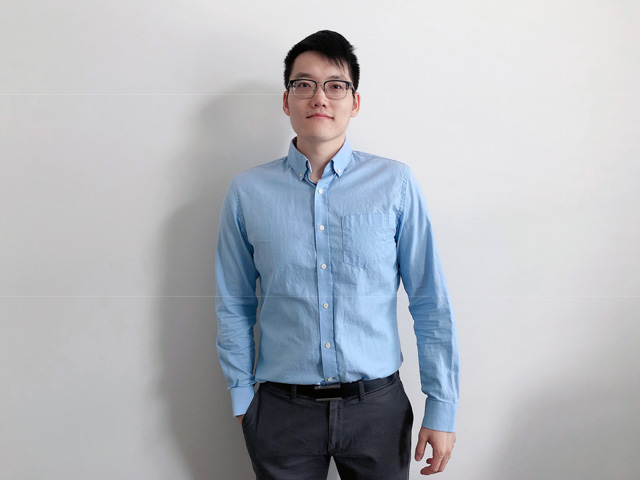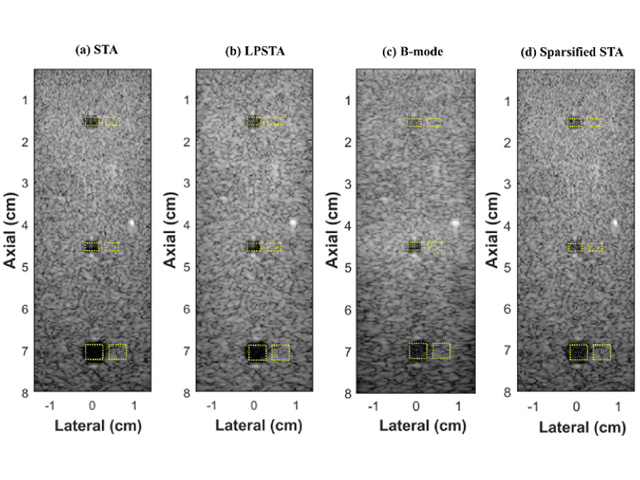Reducing the complexity and cost of a mainstream imaging technology

One of the ongoing quests for imaging researchers is to reduce the cost of imaging technologies while maintaining or enhancing image quality. This is seen as a path to developing new methods that could enable widespread access to cost-effective and accurate imaging.
In the specific case of medical ultrasound imaging, one technology that is a focus of such research is synthetic transmit aperture imaging (STA). Used widely in diverse fields such as radar, seismic monitoring and nondestructive evaluation, STA tends to involve excessive hardware complexity and cost when applied to large-scale ultrasound systems used for medical imaging. New two-dimensional ultrasound arrays that have been introduced into the market have further driven this hardware complexity.
Working with his supervisors Dr. Yuan Xu and Dr. Michael C. Kolios, Ryerson Biomedical Physics PhD graduate Ying Li conducted research to address the limitations of STA related to ultrasound applications. In a paper titled “Large-pitch Synthetic Transmit Aperture Imaging: A Feasibility Study,” (external link) published in the IEEE journal Transactions on Ultrasonics, Ferroelectrics, and Frequency Control, Li shared the findings of his work.
“We proposed a novel large-pitch method for synthetic transmit aperture imaging (LPSTA) integrated with a spatial response function (SRF),” says Li. “Our innovation reduces hardware and computational complexity of STA ultrasound imaging while maintaining acceptable image quality.”

The images were obtained from Verasonics Vantage Research System. It demonstrates the LPSTA (b) can have a comparable image contrast with standard STA with full array (a). With the similar system complexity, LPSTA shows the overall improved image contrast compared to conventional B mode imaging (c) and sparsified STA (d)
The proposed LPSTA method delivered comparable image contrast to standard STA with the full array. It showed significantly better image contrast than comparable methods with the same level of complexity, which is considered a breakthrough with important potential benefits.
“This research can potentially lead to the design of a system low in cost, power consumption, and computational load,” says Li. “In addition, the technique can be applied to two-dimensional matrix transducer arrays for three-dimensional STA imaging. That would help in realizing the clinical applications of real-time three-dimensional ultrasound imaging technology using large arrays.”
Building on this research, Li and the team are planning to continue exploring options for improving the spatial resolution of the current LPSTA implementation. Additionally, their initial application of the technique, which was designed for a 1D array for 2D ultrasound imaging, has shown great potential for use in 2D arrays for 3D ultrasound imaging. Research is being conducted to explore the potential impact of their method for those applications.
Looking back on what led to the discovery, Li offers a reflective insight into research and innovation. “Initially, we planned to address the challenge of reducing the system complexity by using a novel and popular method called compressed sensing. However, our preliminary results showed that the simple idea of combining elements worked better than the fancy ideas. By sticking to the simple idea and going deep into the details, we were able to make this breakthrough. It was a lesson in the importance of choosing a research approach based on data rather than your preconceptions or preferences.”
Funding of this research was provided by a Natural Sciences and Engineering Research Council of Canada (NSERC) award to Dr. Xu, Canada Foundation for Innovation (CFI) funding to Dr. Kolios, and a Ryerson Graduate Fellowship to Li.